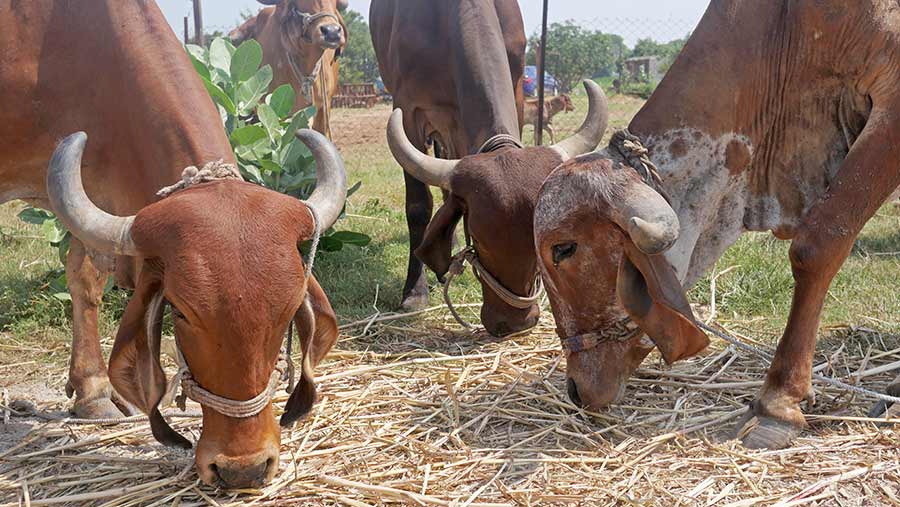
Save Dairy Animals from Hyperthermia: GADVASU Professor
Hyperthermia in Dairy Animals
Like humans, animals too suffer from heat intolerance, particularly when they are left in the direct sun and do not get adequate water. Domestic animals and poultry birds are particularly vulnerable to the heatwave. Hyperthermia in dairy animals (heat intolerance syndrome) is one of the commonly encountered problems among dairy animals in Punjab. The problem is most common in exotic and crossbred animals as said by Dr Charanjit Singh, professor-cum-head, department of veterinary medicine, Guru Angad Dev Veterinary and Animal Sciences University (GADVASU), Ludhiana.
The condition occurs due to high environmental temperature and humidity. During the weather conditions, heat loss is reduced leading to an increase in body temperature called hyperthermia. Panting (marked increase in respiration rate), reduced appetite and milk production are the common manifestations. The most common initiating factor is poor ventilation and also sometimes in animals that have suffered from foot and mouth disease in the past as a result of damage to the heat regulation system in the brain. This condition is cannot be treated with antibiotics.
Senior scientist in the department of veterinary medicine, Dr Sushma Chhabra said that hyperthermia is mostly observed during months of May to September with maximum cases recorded from July to September. Farmers remain cautious in July and August, while in September as the heatwave begins to recede, it has been observed that farmers become casual in their approach which triggers the problem, she said. During humid weather, the ambient temperature and relative humidity frequently exceed the critical comfort level of the temperature-humidity index (72), resulting in elevated body temperature and panting. The temperature-humidity index describes the effect of the environment on the animal’s ability to lose heat.
Dr Charanjit Singh revealed that a study conducted by Dr Sushma Chhabra, and Dr SNS Randhawa, on dairy animals, showed that subcutaneous administration of 5 ml iodized oil ( containing 750 mg of elemental iodine) for three consecutive days may prove helpful in its management.
More than 95% of the hyperthermic dairy animals recovered with this therapeutic regimen and no relapse was recorded during the post-treatment period of two months. He advised farmers to provide an ample quantity of water to animals, keep them away from direct sunlight in well-ventilated places, and give bath to dairy animals 2-3 times a day. He said that often farmers treat such animals with antibiotics and other drugs (diminazene or buparvacone). “This is absolutely not required unless the tick-related diseases have been confirmed by blood tests. If high fever persists or there is a loss of appetite and milk yield, get the blood of your animal examined at GADVASU for tick-borne diseases or other infections. Self-medication should be avoided by farmers. Contact only qualified veterinarians for treatment,” he added.
- Hyperthermia occurs due to high environmental temperature and humidity.
- It is one of the commonly encountered problems among dairy animals in Punjab Panting, reduced appetite and milk production are the common manifestations.
- This condition is cannot be treated with antibiotics
- Experts advised farmers to provide an ample water to animals, keep them away from direct sunlight.
Source: The article is extracted from The HindustanTimes, September 13, 2020.
